Managing Lot Drainage: What You Need To Know
Water is a home’s worst enemy. Many water penetration issues in foundations are a result of lot drainage being improperly managed. Lot and concrete surfaces catch a great amount of water and can concentrate this drainage toward the home. Without appropriate water management, significant damage can occur, and the repairs needed can be time consuming and very expensive. Successfully controlling lot drainage is critical to ensure foundation and floor structure integrity and to prevent unacceptable environmental conditions within the foundation.
MY JOB:
As a licensed home inspector, I inspect a home’s water management efficiency with respect to how lot drainage is adversely affecting the condition of the home. The following photos are some examples of the kinds of damage I have found during home inspections that were related to poor water management:



I could show many more photos of the negative effects poor water management has on a home, but I think the point has been made. Insufficient water management results in a poor environment, flooding, deterioration of foundation, movement and cracking of the foundation, and decay to the wood floor structure. The poor environment caused by the water penetration results in deterioration of metal hangers for pipes and insulation, corrosion of gas piping and steel columns, it damages the insulation, and it creates an environment conducive to mold and wood destroying insects. As a result, the cost for repairs to damage caused by poor water management can add up. It goes without saying then, that it is very important for a homeowner or home buyer to understand how well the lot is managing water.
GRADING:
My exterior inspection includes a visual examination of the grade and other surfaces to try to determine where they are draining. The grade is the direction of the slope of the hard ground surfaces adjacent to the home. How the lot is graded is one deciding factor of where lot drainage will flow. Consequently, proper grading is one of the first lines of defence needed to successfully manage lot drainage. If a grade around a home allows water to pool adjacent to the home, causes water to flow toward the home, or causes erosion adjacent to the home, the grading is considered defective and in need of repair. Acceptable grading is directly related to the slope of the grade. When I inspect the grading of a home I am looking for three different types of slopes:
NEGATIVE GRADE:
A negative grade is one that slopes toward the home and directs lot drainage toward the foundation. This is the type of grade a homeowner and buyer would want to avoid. Gravity works against your home in this case, pulling water toward the home. Negative slopes are caused by poor grade installation, grade settlement over time, the home being built on a hillside or at a lower level than the street or adjacent lots, removing large bushes or trees adjacent to the home, dogs digging holes, erosion from gutter overflow or lot drainage, and poor grading under decks.
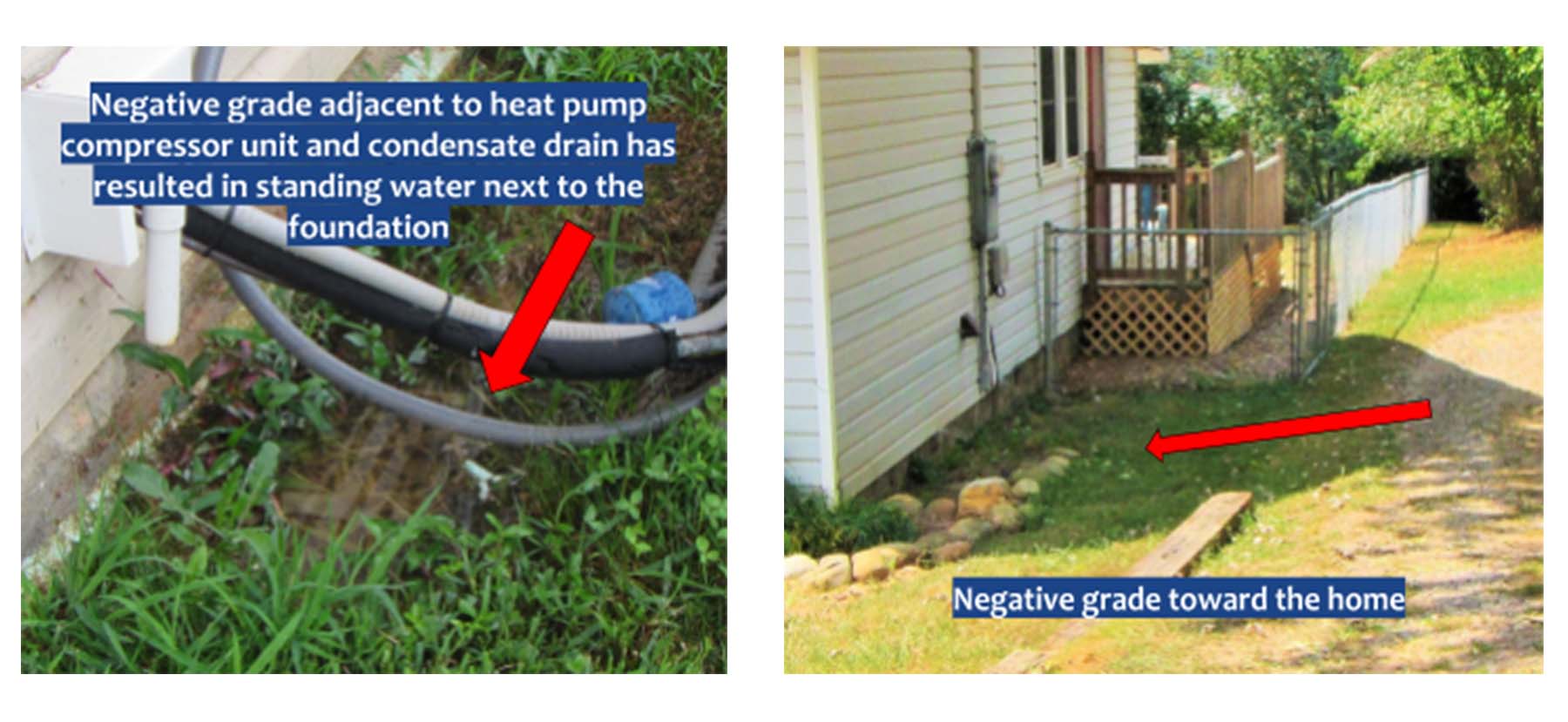

POSITIVE GRADE:
A positive grade is one that slopes away from the home and directs lot drainage away from the foundation. With a positive grade, gravity is being used as a great natural tool for proper water management.
How much positive grade do you need?
In general, it is typically recommended that the grade fall from the foundation of the home a minimum of 6 inches within the first 10 feet. Though a minimum slope of .25 inch within 10 feet may drain water away, the 6 inch positive slope is designed to move the water away quickly and prevent groundwater from seeping back toward the home.

Beware of mulch, pine straw, and gravel around the foundation, it can be deceptive in promoting what looks like a positive or proper grade of soil. Remember mulch, pine straw, and gravel sits on top of the ground surface and is pervious to water. It is the level of the soil under the materials that determines the slope of the grade.
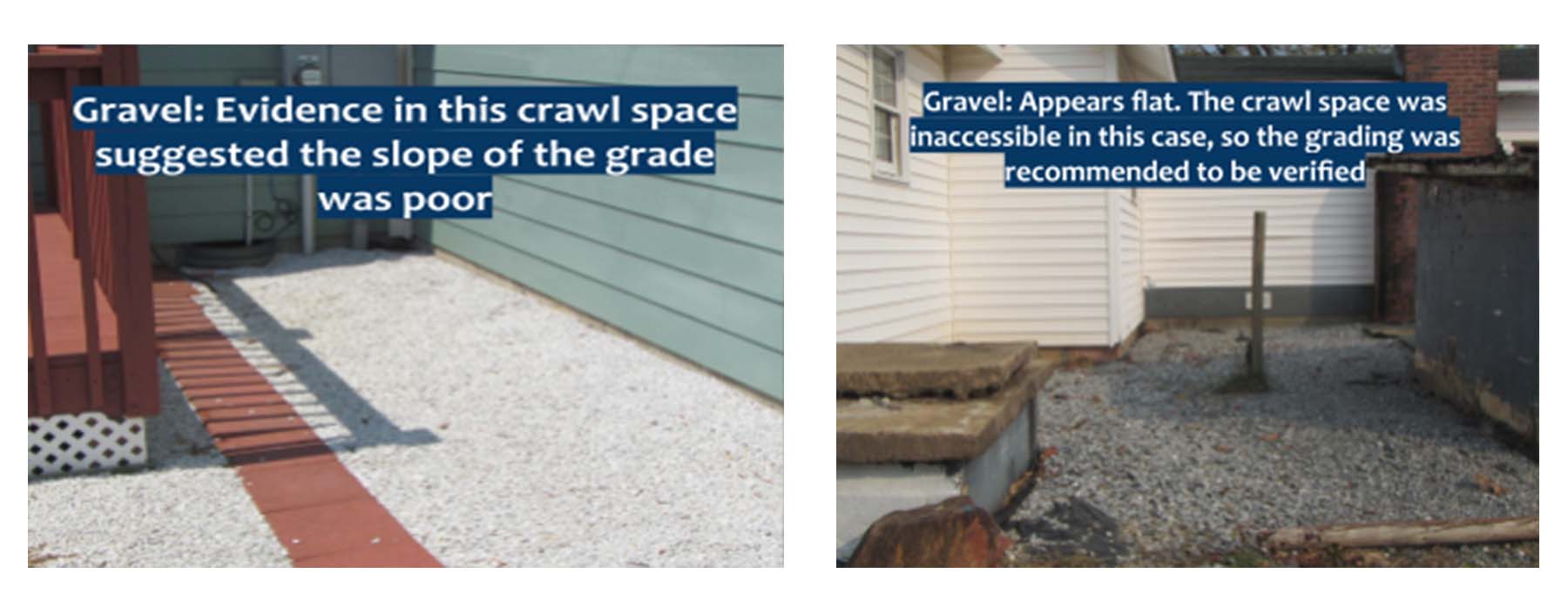
What if there is not enough room in my lot to provide the proper positive slope? If drainage cannot be transported on the grade surface due to lot limitations, the drainage can be transported with an underground system instead. Where lot lines, walls, slopes or other physical barriers prohibit 6 inches of fall within 10 feet, drains that catch the water and discharge it through a piping system an appropriate distance from the home can be constructed to ensure drainage away from the structure. A catch basin for the drain is usually installed at a low point of the lot and a drainage pipe or other conduit is attached to it and slopes away from the basin.
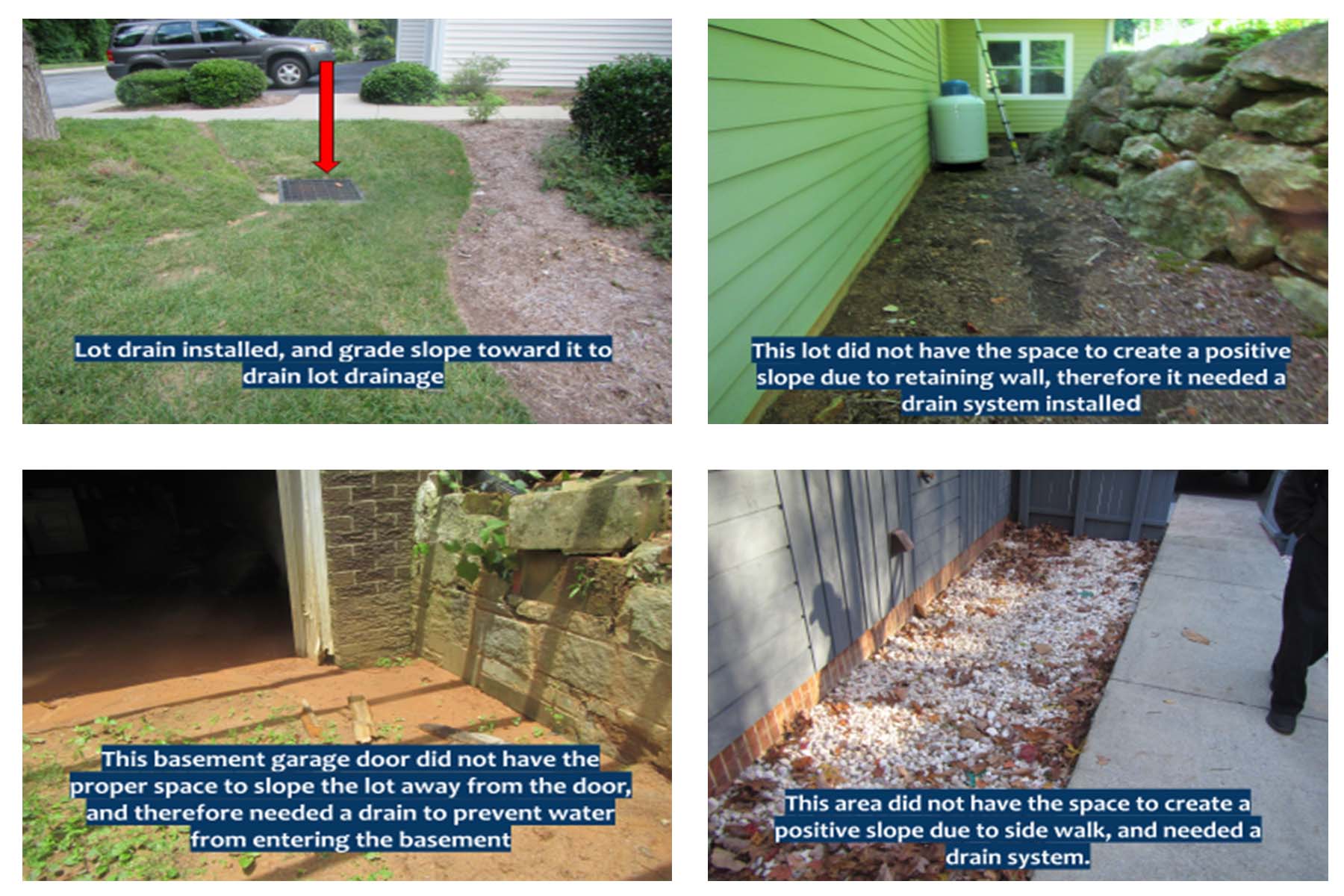
One common problem with lot drains is that debris accumulates on or in them over time, which slows or stops the drainage. If your home has a lot drain it will be important to check the grates and basins for debris build up. Look for evidence around the basin for backing up of water due to poor drainage, and try to find where the drain is discharging and look for debris build up. Regular maintenance and service of these drains is a proactive way to prevent property damage due to water penetration.
NEUTRAL/LEVEL GRADE:
A neutral or level grade is one that is considered flat, and without using any technical tools, does not appear to slope away or toward the home. Though a level grade may not be sloping toward the home, the grade still should be corrected to positive grade due to pooling water. If water pools near the home the groundwater can eventually seep into the home’s foundation. Nothing should be flat. Everything should slope away from the building.
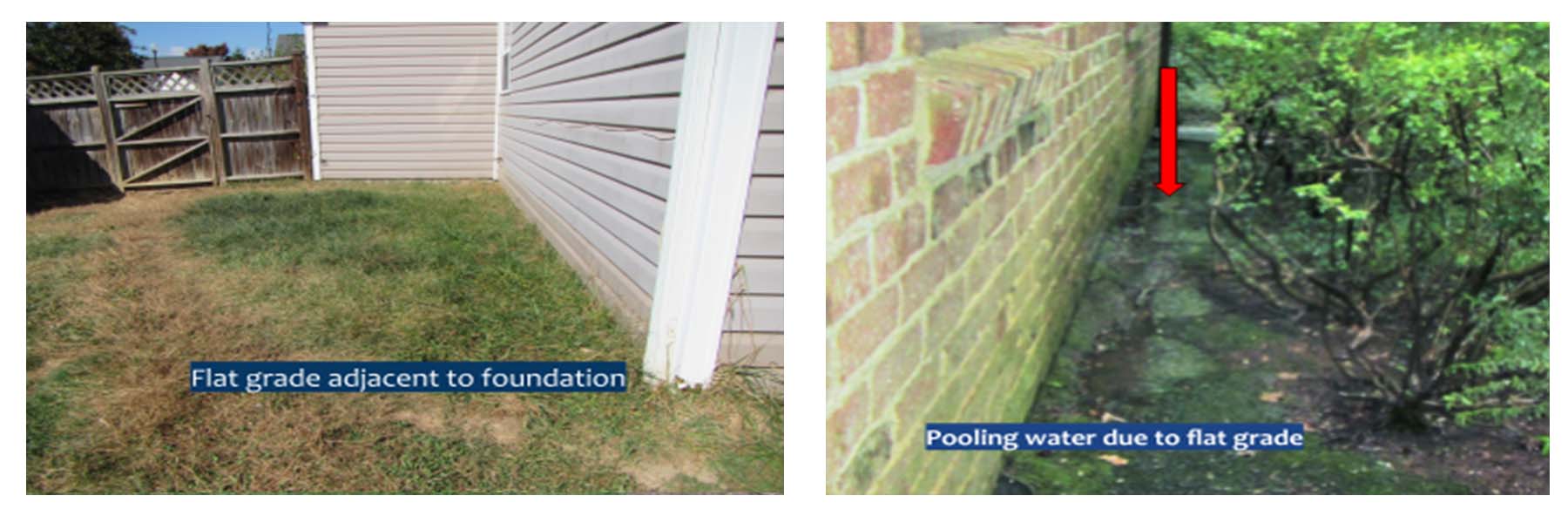
If the grade slope cannot visually be determined, I look for other evidence of poor drainage such as moss or algae growth on the foundation at the grade level, soft soil, limited grass, or gravel adjacent to the foundation, indicating a history of standing water. If I see those signs I recommend that the grade slope be verified by a more technical examination and corrected as needed.
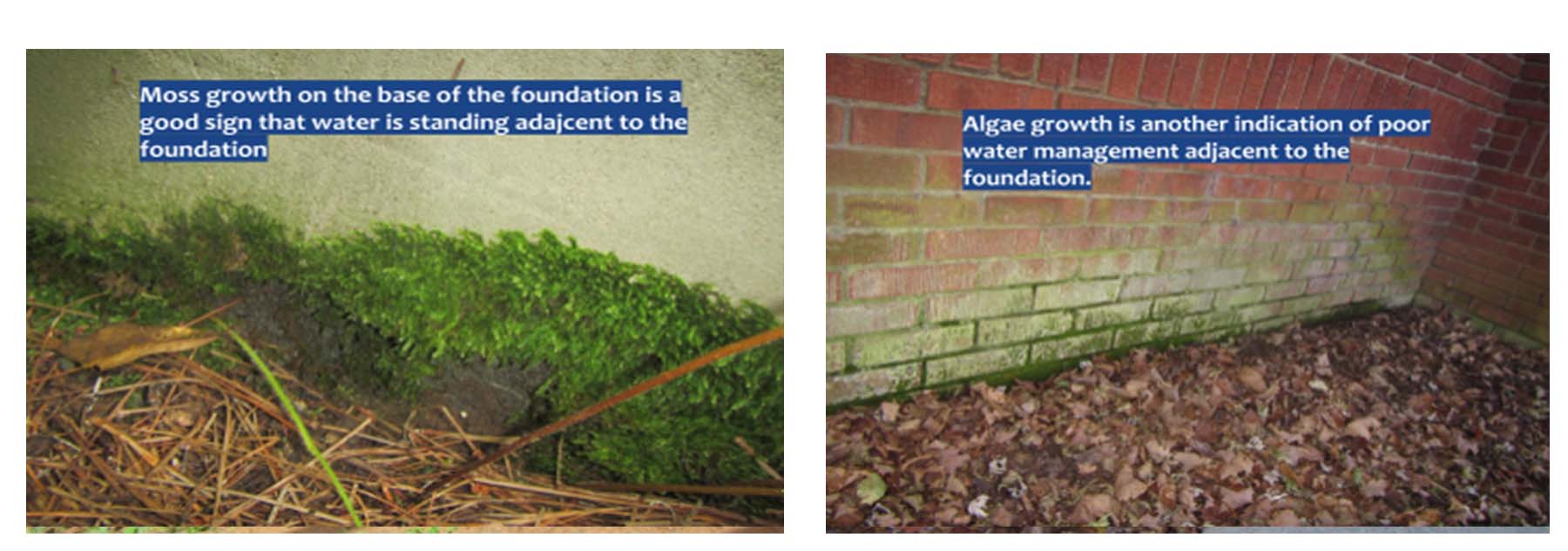
BACK TO FRONT GRADING:
This type of grading is when the rear lot line is higher than the front lot and drainage flows downhill toward the home. When this is the case, a swale should be created around the house to direct the lot drainage from the high point around the house and down the hill. Back to front grading is typically used for properties on a hillside or mountainside.
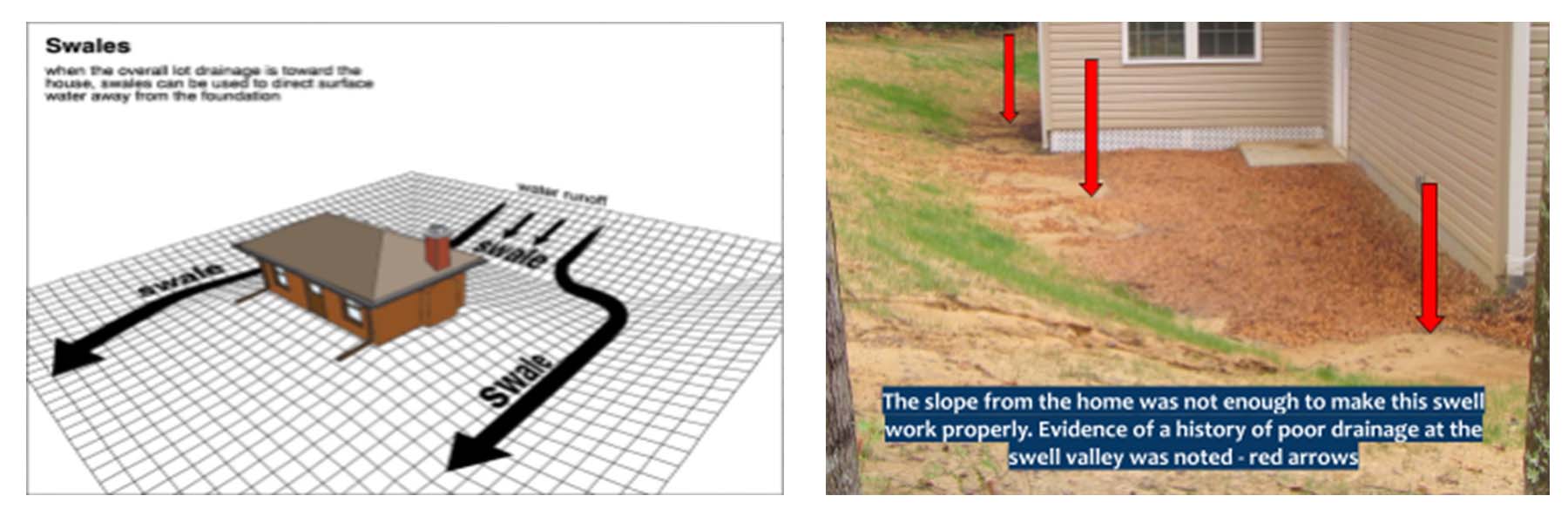
CONCLUSION:
Don’t let your home’s worst enemy get an advantage. Ensure your lot is properly draining water away to prevent an accumulation of damage that results from poor water management. This is one area of your home that is worth the money. Go out today and examine your lot. The best time to inspect it on your own home is while it is raining.
Remember also, no matter if you are a buyer or home owner, a home inspection is the best way to determine if issues like I presented above are not happening to your home. Let me help ensure your lot is draining properly. When you really want to know Contact Adam Duncan of Duncan Home Inspection Services, LLC.

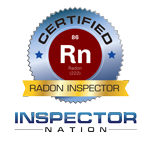

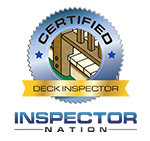


 >
>